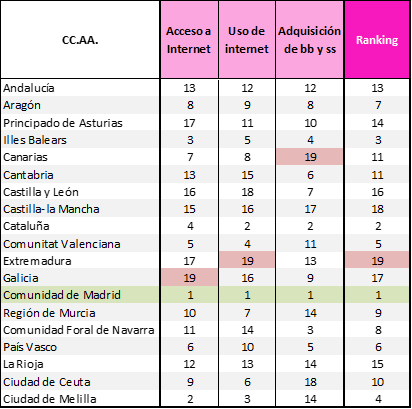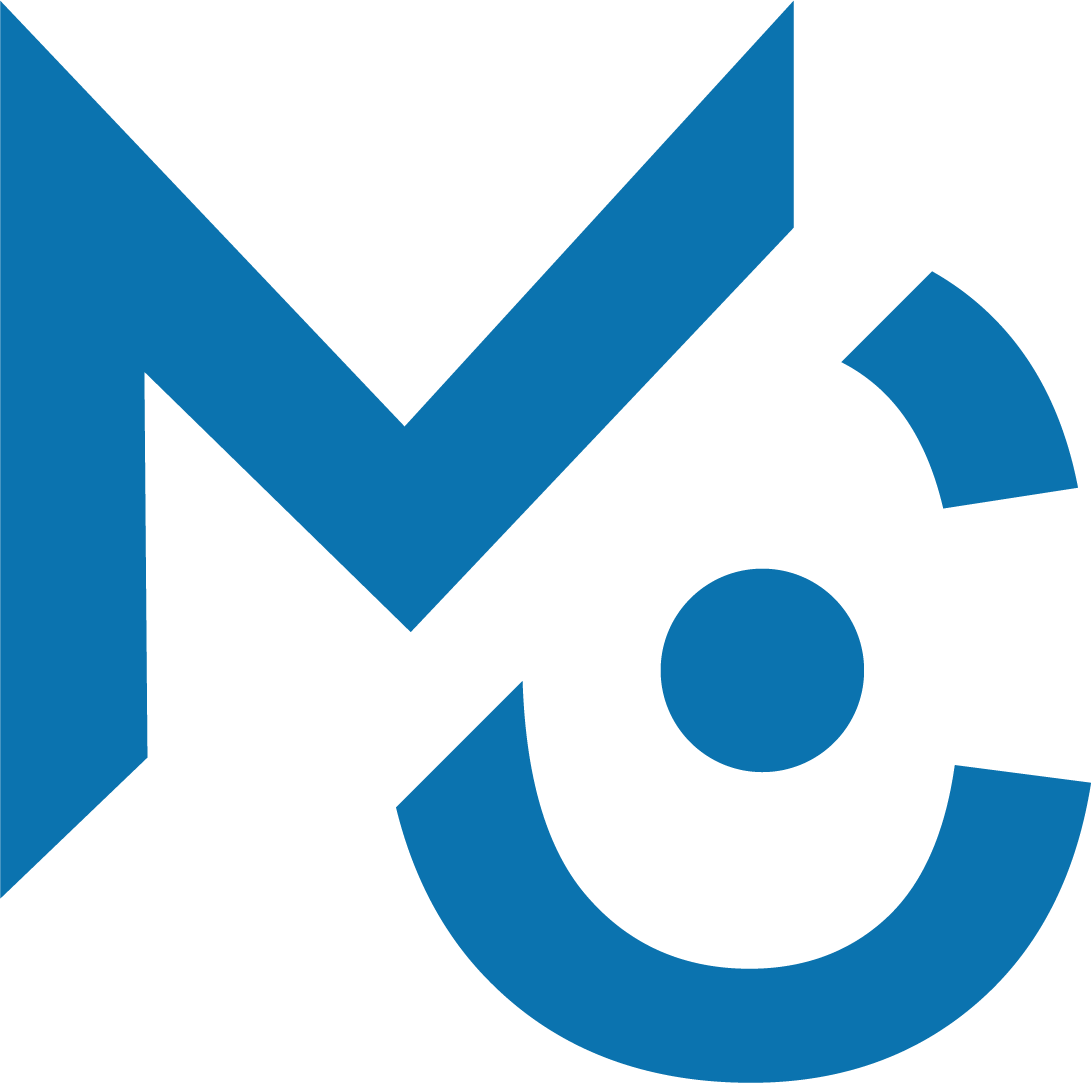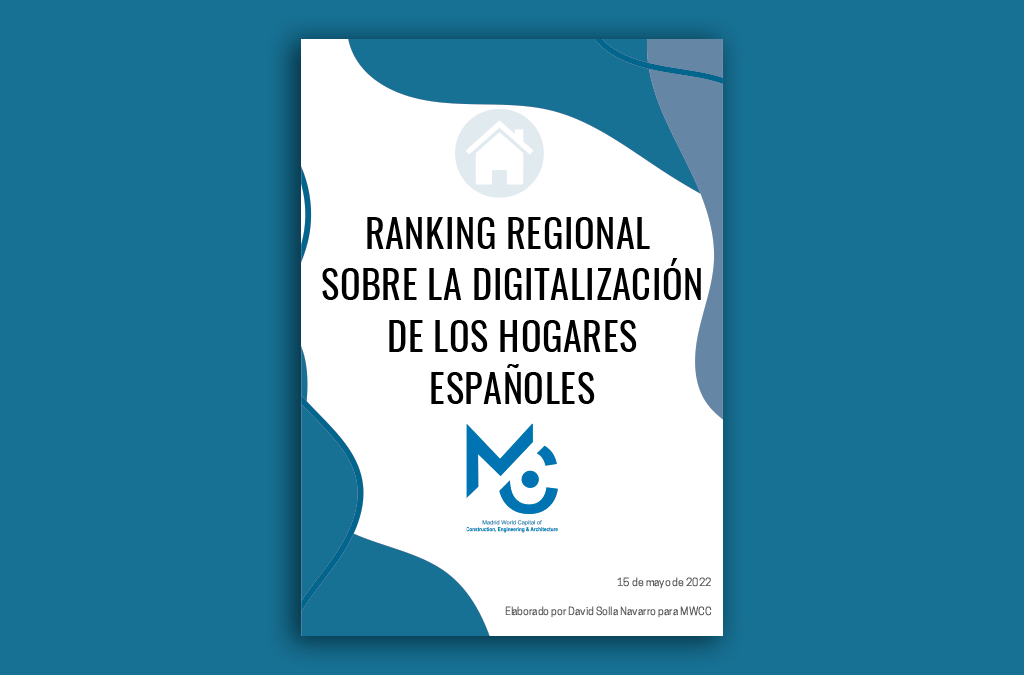MWCC, after publishing the Digitization Ranking of Regional Administrations, publishes a second report in which the degree of digitization of homes in the Autonomous Communities and Cities is assessed through 18 indicators divided into three dimensions: “Internet access” , “Use of the Internet” and “Acquisition of goods and services over the Internet”.
From the general results obtained, the degree of digitization of Spanish homes stands out, which has been growing in recent years to form part of the daily life of the Spanish population. Thus, 96% of households have Internet access, 86% of the Spanish population uses the Internet on a daily basis and only 5% have never accessed the Internet.
INTERNET ACCESS
The City of Melilla stands out for being the territory with the highest percentage of households with internet access (99%), and for having a download speed equal to or greater than 100 mbpas in 100% of them; the Spanish average stands at 96% and 87% respectively.
Madrid, for its part, is the region with the highest percentage of the population that accesses the Internet from outside the home or work with 91%, when the average in Spain is 87% and the minimum is 78% in Galicia.
INTERNET USE
This second dimension assesses the frequency with which we use the Internet and the purpose of that use. Thus, the percentage of the population that has never accessed the internet is 5% in Spain, but varies between 3% in regions such as the Balearic Islands, Catalonia, Madrid and Melilla and 8% in Extremadura and Galicia.
On the contrary, 86% use the internet on a daily basis in Spain, with a maximum of 90% in Madrid and a minimum of 81% in Extremadura and Galicia. In the last three months, 94% of Spaniards have accessed the Internet.
Regarding the purpose, 65% of the population uses the Internet both to access Social Networks and to Operate with their Financial Entity. However, while in some Autonomous Communities these percentages are similar, in others, such as the Basque Country, they are very different since the population that accesses social networks is 53% and the population that operates with their bank is 68%. Andalusia would be in the opposite direction, with 66% accessing social networks and only 58% operating with their bank.
But Spaniards also use the Internet to communicate and carry out procedures with the Administrations, with an average of 69% and 55% respectively. The case of Castilla-La Mancha is paradoxical since, although it leads the Digitization Ranking of Regional Administrations, its population is the one that uses the internet the least to communicate with the administration (59%) far from 82% of the population of Melilla . The population of Navarra, for its part, is the one that carries out the fewest procedures online (45%), while the population of Madrid, with 65%, is the one that marks the highest value.
ADQUISITION OF GOODS AND SERVICES
The acquisition of goods and services through the Internet is establishing itself as a habitual model of purchase. 67% of the Spanish population already uses it, although with differences of 20 points between regions such as Madrid (73%) and the Canary Islands (53%). On the contrary, 28% of the population have never purchased goods or services or have done so for more than a year, this percentage rising to 41% in the case of the Canary Islands. The insularity of the Canary Islands seems to be a factor that makes purchases difficult, possibly due to the increased cost due to shipping costs.
Finally, the Ranking assesses the percentage of Spaniards who buy or reserve their trips and accommodation online, with the population of Madrid (51%) using it the most and that of Melilla (24%) the least. On average, 37%
FINAL RANKING
The final ranking places the Community of Madrid as the territory with the greatest digitization of homes. This region leads each of the partial rankings and ten of the 18 indicators that compose them, with its worst position being sixth (use of Social Networks).
Behind Catalonia, fourth in internet access and second in the other two dimensions. It tops two of the 18 indicators and has its worst rating in high-speed coverage, where it ranks eighth.
Next, the Balearic Islands (3rd), the City of Melilla (4th) and the Valencian Community (5th).
The autonomous communities with the lowest degree of digitization are Extremadura (19th, placing 17th, 19th and 13th in each of the partial rankings), followed by Castilla-La Mancha (15, 16 and 17) and Galicia (19, 16 and 9) .
 REGIONAL RANKING OF THE INTERNET SKILLS OF THE SPANISH POPULATION
REGIONAL RANKING OF THE INTERNET SKILLS OF THE SPANISH POPULATION
MWCC also presents a Ranking in which the abilities of the Spanish population to surf the Internet are valued.
The Spanish population that does not have knowledge of the internet represents 5% of the total, when in 2017 they represented 14%. Among the territories, Madrid and Melilla have the minimum (3%), while Extremadura and Galicia have the maximum (8%).
In terms of basic knowledge, at least 92% of the population has some skill and 67% has average skills, with the population of Melilla having the highest percentage (74%) and the population of the Basque Country having the least. (62%).
In terms of medium-advanced knowledge, Madrid would be the first (62%) and Extremadura the last (46%).
The final Ranking would be with the Community of Madrid at the forefront, followed by Catalonia and the City of Melilla. In the opposite direction, Extremadura and Galicia would be the ones that would occupy the last positions.


